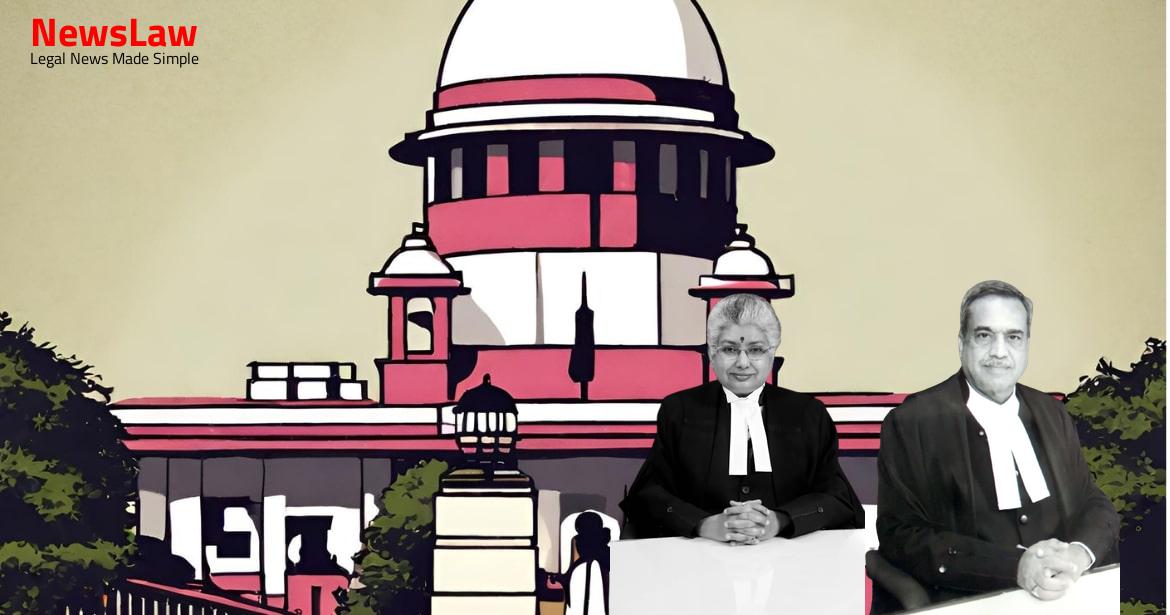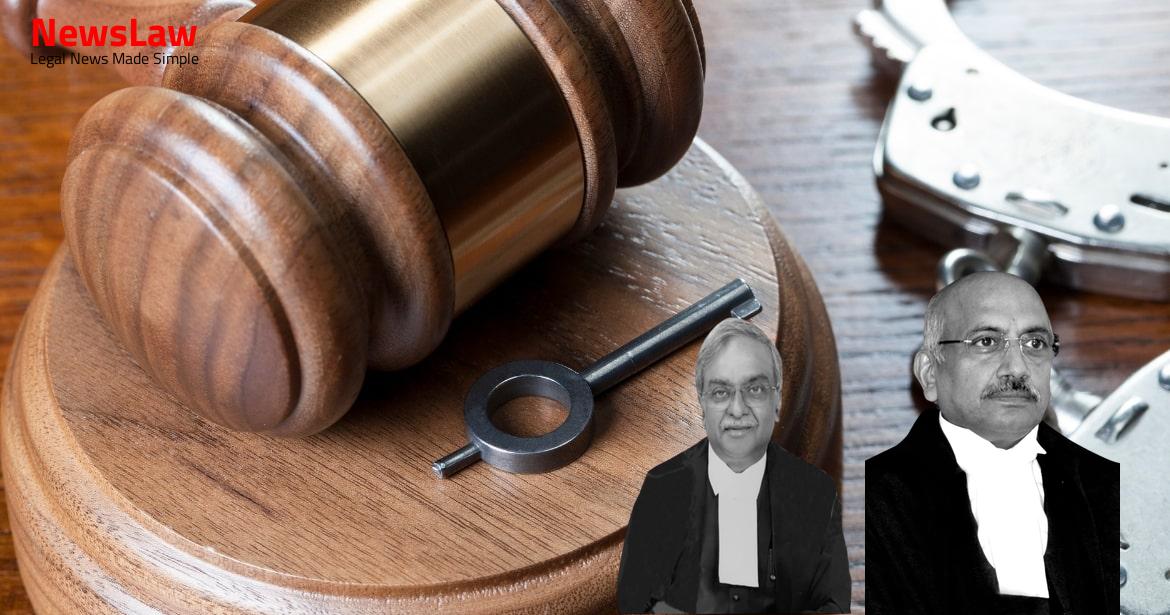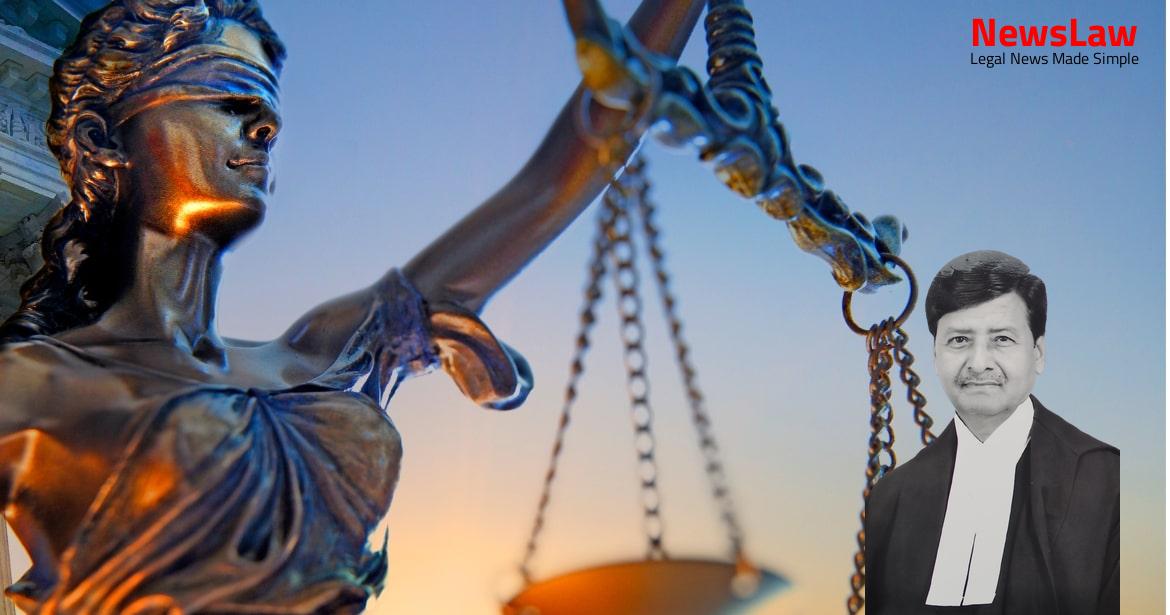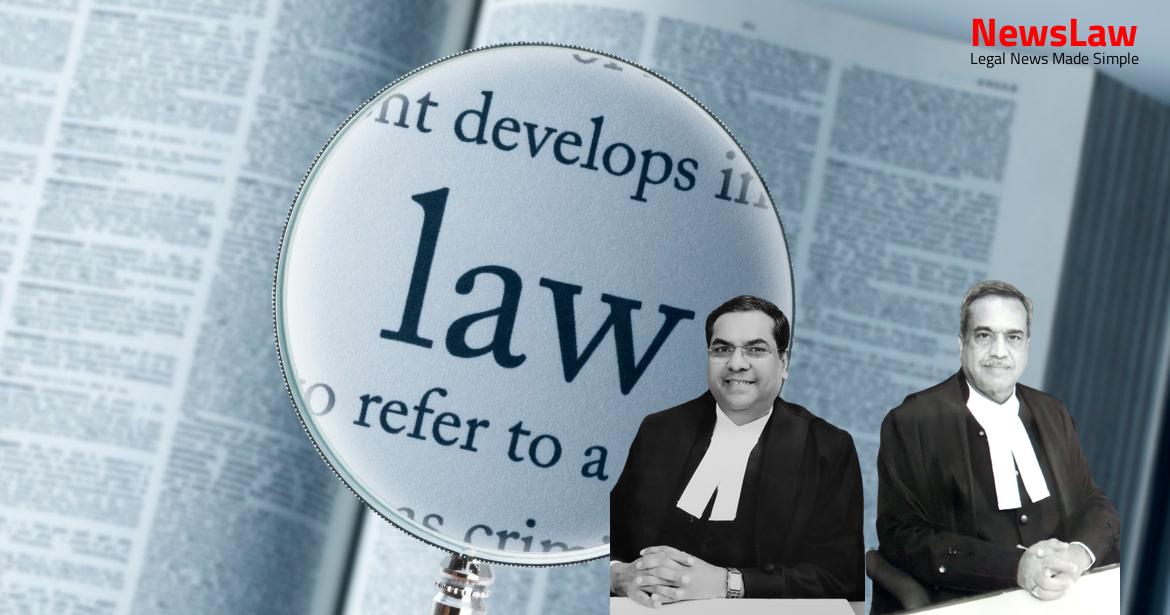Explore a detailed legal analysis of a recent case revolving around the determination of juvenility claims in age assessment. The court’s emphasis on evaluating evidence, avoiding a hyper-technical approach, and considering various factors in age determination is crucial in understanding the complexities involved in such cases. Let’s delve into the nuanced legal analysis provided by the court in this intriguing case.
Facts
- The appeal was dismissed by the Court on 04.01.2021
- Appellant filed Criminal Revision No.430 of 2021 before the High Court
- This appeal is against the order dated 12.03.2021 of the High Court rejecting the criminal revision
- The High Court’s order was in response to the judgment on 04.01.2021 by the Additional District and Sessions Judge
- The criminal appeal was against the order dated 11.11.2020 by the Principal Magistrate, Juvenile Justice Board, declaring the accused as a juvenile delinquent
- On 05.05.2020, an incident occurred involving respondent no.2 – Nishant Solanki and other accused.
- Appellant filed an application seeking a medical test of Nishant, which was rejected.
- Appellant filed a criminal revision and a transfer application before the High Court, requesting a transfer of proceedings related to Nishant.
- During the proceedings, an application was filed for a medical test to ascertain Nishant’s true age.
- The JJ Board declared Nishant as a juvenile delinquent based on an application filed by respondent no.3, Nishant’s mother.
- Appellant filed a criminal appeal under the JJ Act, 2015, challenging the JJ Board’s decision.
- Police filed a charge-sheet against all accused, including Nishant, under various sections of the IPC.
- Witnesses, including school principals, were examined in the case.
- The incident caused injuries and death to the appellant’s family members.
- Nishant’s mother filed an application before the JJ Board, requesting Nishant to be declared a juvenile delinquent.
- Appellant sought permission to cross-examine respondent no.3, which was rejected.
- The High Court rejected the appellant’s criminal revision through an order on 12.03.2021.
Also Read: Court’s Legal Analysis on Specific Performance in Tribal Land Transfer Case
Arguments
- Controversy over the signature of the juvenile on the school admission form at four years of age.
- Discrepancies in the oral testimony and documents presented in determining the age of the juvenile.
- Reference to legal cases supporting the need for scrutiny beyond matriculation certificate for age determination.
- Questioning the timeline of the juvenile’s admissions and age progression in different classes.
- Issue raised regarding the Aadhaar number requirement in documents submitted before the relevant issue date of such numbers.
- Argument against relying solely on matriculation certificate for age verification due to conflicting evidence.
- Doubts raised about the authenticity of documents presented by the juvenile in support of juvenility claim.
- Contradictions observed in witness statements regarding the juvenile’s date of birth.
- Concerns raised about the juvenile’s ability to sign his name at the age indicated on the school admission form.
- Appeal for dismissal of the application claiming juvenility by the juvenile.
- The appellant cannot seek ossification test of respondent no.2 for age determination.
- Cases like Babloo Pasi vs. State of Jharkhand and State of M.P. vs Anoop Singh do not consider ossification test as conclusive for age determination.
- The appellant has not successfully refuted respondent no.2’s claim of being a juvenile at the time of the incident.
- Nishant, being a juvenile at the time of the incident, is entitled to protection under the JJ Act, 2015.
- The appeal has no merit and should be dismissed.
- The orders of the High Court, District Judge, and JJ Board may be set aside.
Also Read: Clarification on Reservation for Scheduled Tribes in Union Territory
Analysis
- Age determination procedures under the Juvenile Justice Act, 2015.
- Difference between the procedures under the JJ Act, 2015 and the JJ Rules, 2007 in age determination.
- Presumption and determination of age under section 94 of the JJ Act, 2015.
- Procedure to be followed in determination of age under Rule 12 of the JJ Rules, 2007.
- Claim of juvenility and procedures to be followed in different courts under the JJ Act, 2000 and JJ Act, 2015.
- Recording of age by the Committee or the JJ Board as the true age of the person brought before it.
- Section 94 of the JJ Act, 2015 raises a presumption of juvenility.
- The JJ Board may conduct an age determination process if there are reasonable doubts.
- In this case, no contrary evidence was presented by the appellant.
- The High Court’s decision was upheld due to lack of contradictory proof.
- The standard of proof in an inquiry differs from that in a determination of age based on evidence.
- No abstract formula exists to determine age; it depends on evidence in each case.
- A hyper-technical approach should be avoided when evidence supports the claim of juvenility.
- Evidence, such as school admission records, holds weight in age determination.
- Ossification test is not the sole criteria for age determination, but a guiding factor.
- If two views are possible based on evidence, the benefit should favor the accused in borderline cases.
- The Juvenile Justice Act, 2000 is not meant to provide shelter to accused of grave and heinous offenses.
- Matriculation certificates are considered conclusive proof of an accused’s date of birth if no contradictory evidence exists.
- If there are doubts about the accused’s age, an inquiry must be conducted or evidence must be presented.
- Courts should carefully examine pleas of juvenility without folding hands, and positive findings must be made.
- A hyper-technical approach should be avoided in determining the age of the accused for juvenility claims.
- Claims of juvenility must be judged case by case basis, and frivolous claims should be rejected.
- The ossification test alone is not a conclusive criterion for determining the date of birth.
- The credibility of documents such as school leaving certificates should be evaluated based on the specific circumstances of each case.
- Law does not demand the impossible, and the credibility of documents post-conviction depends on the facts of the case.
- Each case should be considered based on the evidence available.
- The age recorded by the Committee or the Board is deemed to be the true age of the person under the JJ Act, 2015.
- Sub-section (3) of section 94 of the JJ Act, 2015 contains a deeming provision that aims to eliminate controversies or doubts about the age of the child brought before the Committee or the JJ Board.
- The deeming provision serves to resolve age-related disputes internally at the level of the JJ Board or the Committee.
Also Read: Analysis of Tax Exemption for Enemy Properties
Decision
- Appeal is dismissed due to lack of merit.
- All pending interlocutory applications are disposed.
Case Title: RISHIPAL SINGH SOLANKI Vs. THE STATE OF UTTAR PRADESH (2021 INSC 752)
Case Number: Crl.A. No.-001240-001240 / 2021



